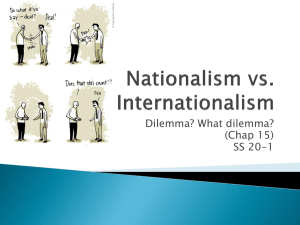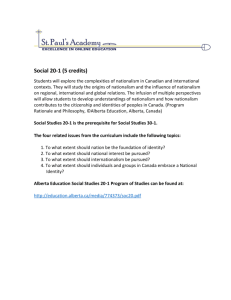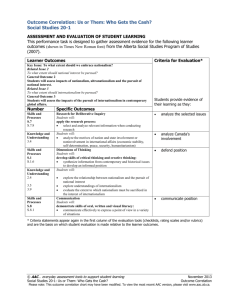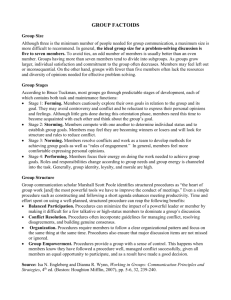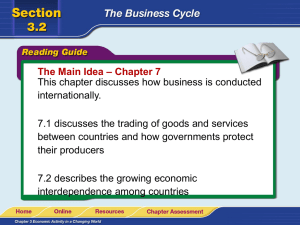Social Studies 20-1 Chapter 15 Questions - wolfesocial20-1
advertisement
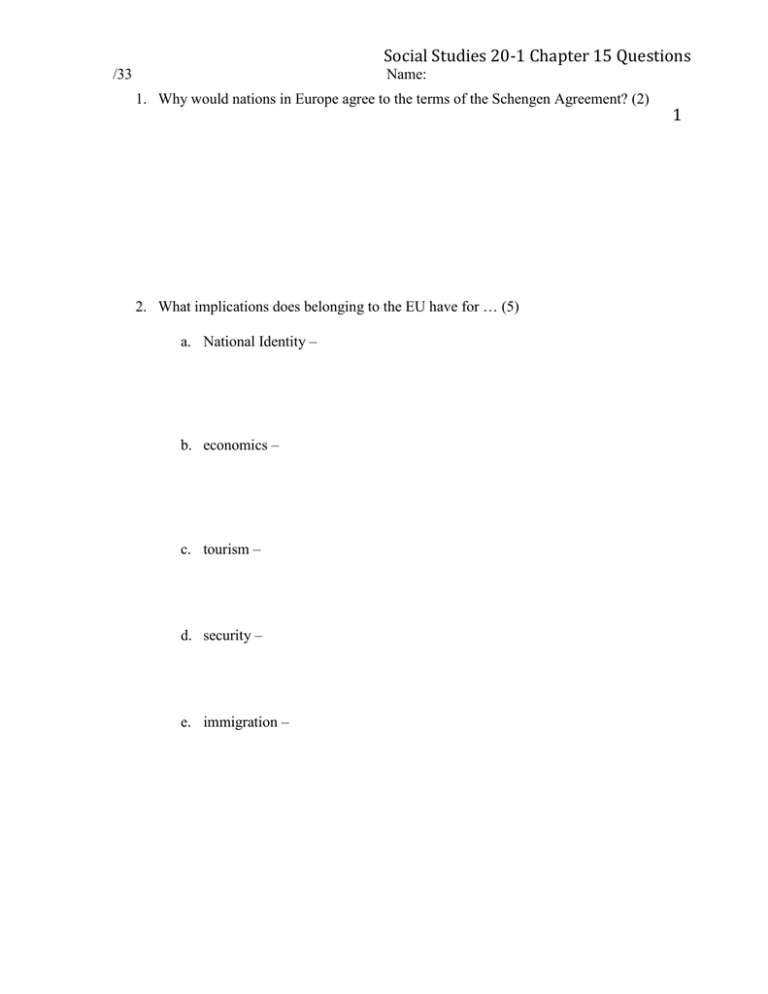
Social Studies 20-1 Chapter 15 Questions /33 Name: 1. Why would nations in Europe agree to the terms of the Schengen Agreement? (2) 2. What implications does belonging to the EU have for … (5) a. National Identity – b. economics – c. tourism – d. security – e. immigration – 1 Social Studies 20-1 Chapter 15 Questions /33 Name: 3. Look at the Ideas and Opinions one page 324. What is the difference between an alliance and an “advanced supranational democracy”? (2) 4. Look at the Ideas and Opinions on page 325. Chris Patten refers to nations needing to “pool their sovereignty”. What do you think he means by this and what would result if nations did this? (3) 5. Explain why the European Union is a great example of internationalization when it comes to deregulation, integration and harmonization? (3) 2 Social Studies 20-1 Chapter 15 Questions /33 Name: 6. Using the World Trade Organization as an example, how is nationalism sometimes sacrificed in favor of internationalism? (3) 7. Climate change is a global issue that is not contained by borders. Should an international agreement like Kyoto Accord or an organization be able to force countries to address the problems? (3) 8. What did the Canadians have to do after they became part of the 2005 Waco agreement? Does Canada benefit from this action as a country? (2) 9. Look at the Ideas and Opinions on page 332. The journalist challenges the ideas of sovereignty and international agreements. Are his ideas true in regards to Canada and is this an option that governments have? (2) 3 Social Studies 20-1 Chapter 15 Questions /33 Name: 10. Look at the Ideas and Opinions on page 334. Many Northern European countries see themselves providing a high quality of life. Do the comments made by Dr. George promote internationalism over nationalism? (2) 11. Compare the ideas of the European Union with NAFTA. Use the chart to fill in the similarities and differences between the two. You should have 3 for each side. (6) Similarities between EU/NAFTA Differences between EU/NAFTA a. a. b. b. c. c. 4
